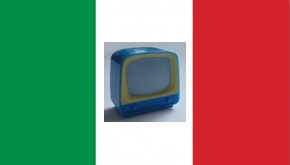Il Corriere del Ticino, October 18, 2005
Readers are punishing the papers for being divorced from the reality of today’s society
Try inviting Serge July, director of « Libération » and he will not respond; try getting hold of his counterpart at « Le Monde » and you’ll be facing an impervious answering machine. And any attempt to contact the “Figaro” seems like climbing a 10 foot wall. Until a few years ago, things were different. In those days, the French press, then still a byword for journalistic excellence, would politely welcome people with a smile. The sudden irreverence is a clear indication of a deeper malaise plaguing not only individual newspapers but the sector as a whole. French dailies are in a serious crisis.
When Edouard de Rothschild acquired a stake in « Libération » last year and took over at the paper’s helm, everyone said that, if the Rothschilds’ enter a business, things can only get better. However, just recently Serge July’s paper posted a loss of between six and seven million euros, which is 50 percent more than in 2004. Sales fell by 9.8% and 50 of the 340 strong workforce (journalists included) now risk losing their jobs. The same is happening at the „Figaro“. Although the paper has been in the hands of manufacturing giant Dassault for more than a year, the outlook continues to be bleak. Total circulation dropped to 330.000 and the only division keeping the company in the black are its weeklies. “Le Monde’s” political editor Edwy Plenel was sacked one year ago but France’s most renowned paper is still in bad shape as it is still operating in the red. One might argue, however, that almost the entire European press is undergoing tough times.
True, but the French case is different nonetheless. In no other country are publishers mired in such a profound crisis which affects the entire sector. So what has gone wrong in Paris? The fact of the matter is that the daily newspapers are paying the price for their intellectual hubris. For years, the have been working under the assumption that readers would keep buying the paper anyway – simply because it is the “Figaro” – and pretending its pages had a monopoly on the truth. As a consequence, no one questioned the journalistic style and the papers did not introduce any new sections dedicated to the society. To be sure, French newspapers have always had a particularly aloof way of writing. But, in the end, they have drifted away from reality. And that is what their readers are punishing them for.
To some extent, the problems are due to competition from the internet. For the most part, however, the blame lies with free sheets handed out in busses or the underground – the “free press” as it also known, which features big pictures and countless agency reports but provides neither editorials nor analysis: not exactly a beacon of quality journalism. To compete with the “quality”- press on a level playing field did not seem unrealistic. Eventually, many readers settled for the free tabloids instead of paying € 1.20 for a daily which may not even live up to their expectations. The figures reveal an extraordinary picture: the year 2004 saw the number of “paying” readers drop by 800.000 or 12 percent. If it were not for the generous subsidies doled out by the state (in 2005 they amounted to a total of € 278m), most newspapers would have gone bust long ago.
Hence the only option left to the French dailies is innovate or evaporate. Leading the pack is “Figaro”, which last week reduced the size of its paper by 1.3 inches, introduced a new set of colours and now features articles grouped according to subject area. Too little too late? It is still too early to say. “Le Monde”, too, now prints colour pictures and is considering starting to sell the paper in the morning (instead of the afternoon). Despite all that one cannot help but think these measures amount to little more than a facelift. For a fresh start worth the name much more is needed: a new spirit, creativity, enthusiasm and a lot more modesty. That is how the papers would turn from being only past to becoming future legends again.
Il Corriere del Ticino, 18.10.2005, p. 33










































